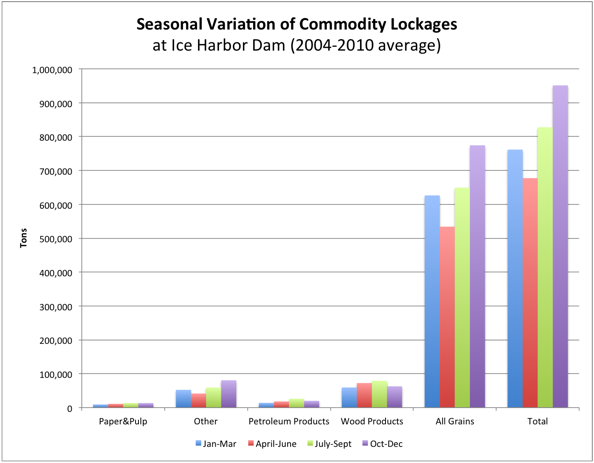forum
library
tutorial
contact

Lewiston Port Considers Rail
by David SparksAgInfo.net, June 15, 2015
|
the film forum library tutorial contact |

|
Lewiston Port Considers Railby David SparksAgInfo.net, June 15, 2015 |
"We are looking into a container by rail and option."
 Idaho is home to the most inland seaport on the West Coast. It is the Lewiston Port which is 465 river miles from the ocean and a vital part of agriculture in Idaho, Montana and the Dakotas. 70% of the pulse crops grown in the area rely on the port to reach overseas markets.
Idaho is home to the most inland seaport on the West Coast. It is the Lewiston Port which is 465 river miles from the ocean and a vital part of agriculture in Idaho, Montana and the Dakotas. 70% of the pulse crops grown in the area rely on the port to reach overseas markets.
Due to a year-long labor dispute with unions, container ships from Lewiston are no longer available to Northwest farmers.
Recently, farmers met with industry experts to see what is possible for alternative transportation. Port manager Dave Doringsfeld explains what might be possible.
"We are looking into a container by rail and option. You have to line up your equipment with your Class A's and you have to line up your containers to steamship lines and there are a lot of complexities that are involved there or does it make more sense to just move peas and lentils to boxcars. So can Port Lewiston help facilitate moving these lentils to Seattle/Tacoma via boxcar."
So a reasonable solution appears to be moving pulse crops to the port that serves Seattle/Tacoma which, at least for now, is fully operational. We will examine that tomorrow.
Related Pages:
Energy Intensities of Freight: Barge, Truck and Railroad US Department of Energy, Transportation Energy Data Book
Economic & Environmental Impacts of Extended Lock Outage by Dr. Ken Casavant, Freight Policy Transportation Institute, 8/11
Industry Reactions to the Columbia-Snake River Extended Lock Outage by Dr. Ken Casavant, Freight Policy Transportation Institute, 6/11
Related Sites:
Columbia Snake River System Extended Lock Closure by Pacific Northwest Waterways Association
From Survey conducted following the 2011 Extended Lock Outage (see Economic & Environmental Impacts of the Columbia-Snake River Extended Lock Outage by Dr. Ken Casavant Freight Policy Transportation Institute, August 2011)
Table 2.3 Typical Wheat Transportation Rates by Survey Respondents
Source: Elevator Firm Survey (Washington, Oregon and Idaho) - Washington State University ($/bushel)Region Number of Firms Direct Truck to Final Market Truck-Barge Rail Eastern Oregon 5 $0.50 $0.29 $0.58 Northern Idaho 5 $1.50 $0.58 $0.73 Southern Idaho 3 $0.71 $0.86 $0.83 Northern Washington 5 $0.52 $0.57 $0.54 Southern Washington 8 $1.22 $0.47 $0.55 Pacific Northwest 26 $0.89 $0.55 $0.65 (bluefish adjusts for
volume differences by
region, Table 3.1)$0.92 $0.51 $0.59 Excerpt from Economic & Environmental Impacts of the Columbia-Snake River Extended Lock Outage by Dr. Ken Casavant Freight Policy Transportation Institute, August 2011: However, energy consumed per ton decreased 4.8 percent due to the heavy use of rail, which is more energy efficient than barge or truck, and the increased use of barge prior to and after the lock outage.
learn more on topics covered in the film
see the video
read the script
learn the songs
discussion forum
